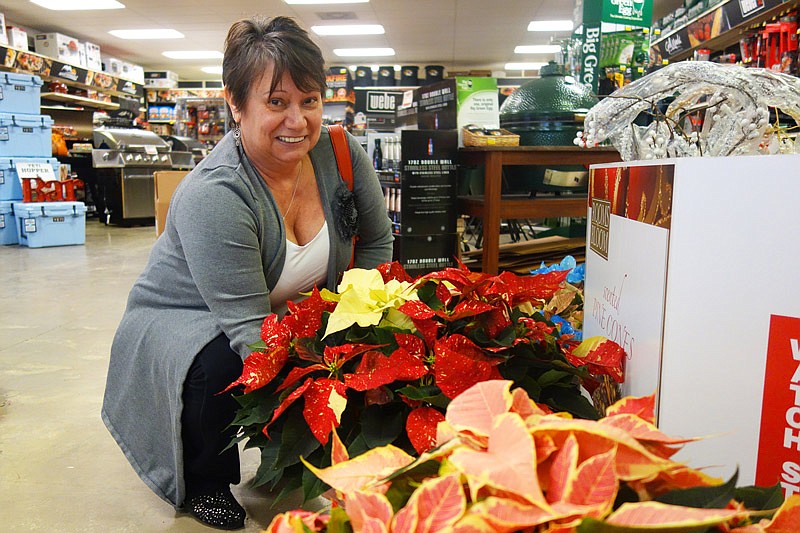Outside, trees and grass are quickly turning a wintry brown. Many people like to bring a little green indoors for the holidays. Want to make sure your plants last through the entire season - and possibly beyond? Here's some helpful advice.
Poinsettias
Perhaps the most familiar of Christmas plants (aside from the tree, of course), the poinsettia boasts gorgeous green and red leaves(or white, pink and other colors). Yes, leaves - or rather, bracts, which are modified leaves. The actual flowers are in those tiny yellow structures in the middle of the leaf bundles.
Also surprising: poinsettias can last for years with proper care.
"I keep them for the holidays and put them outside for the summer and they grow big and pretty, but I can't get them to rebloom," said Diane Neterer, president of the Fulton Garden Club.
The University of Illinois extension offers the following tips.
Position your poinsettia near a window that faces any direction but north. They like about six hours of bright, indirect light a day. Make sure they aren't getting a cold draft from the window, though.
Poinsettias prefer temperatures between 65 and 70 degrees during the winter. If it gets a little cooler at night, that's OK, and it'll probably help the plant keep its colorful bracts longer.
Do not over-water. That's how most poinsettias die. Instead, water only when the soil surface is dry, and make sure to drain the dish afterwards. Poinsettias don't like wet feet.
In the summer, poinsettias can live outside. This article has tips about how to treat your poinsettia if you want it to flower again next December, though it's a rather involved process: bit.ly/2ghSIYO.
Christmas cactus
You might have seen Christmas cactuses at Walmart this year, though they aren't as ubiquitous as poinsettias. Their branches look almost like chains of holly leaves, and they produce large flowers in hot pink, red or white.
According to the Chicago Botanic Garden, unlike most cactuses you commonly encounter in stores, Christmas cactuses are rain forest dwellers. They like humidity and require more frequent watering than other cactuses.
Placing a cup of water beside the cactus will provide humidity as the water evaporates. Soak the soil whenever the top inch has dried out (then pour excess water out of the plant's dish). Christmas cactuses like sunlight, though the midday summer sun is too intense. During the winter a window with northern exposure is preferable.
To trigger your plant to flower the next year, you'll need to start providing it with at least 13 hours of absolute darkness every night, beginning about 8 weeks before whenever you want it to blossom. Try putting it in a closet. After buds appear, start watering more frequently.
With a little love, Christmas cactuses can live for decades - even 30-plus years.
Live Christmas trees
While a fresh-cut Christmas tree pretty much only needs regular watering, a live Christmas tree (purchased from a nursery) takes a little more work. However, buying and planting a live Christmas tree benefits the environment and provides a new home for native wildlife. If that sounds worthwhile to you, the Missouri Department of Conservation has advice. (on.mo.gov/2fC7dmt)
Your first steps involve planning. You should pick out a species of tree that will survive in your yard and stay a manageable size. This document (on.mo.gov/21n8UK2) has suggestions in the conifer section.
Then, find one at a nearby nursery. Make sure it'll fit in your house and you can lift it with ease - it'll be heavier when the root ball is wet.
Bring your new tree home a couple weeks before Christmas and store it in your garage to help it adjust to indoor temperatures. Dig a hole a little bigger than the root ball before the ground freezes hard.
When it's time to bring the tree in, position it somewhere with plenty of light. Set the root ball down in a large bucket or bin with a few large pieces of wood and rocks in the bottom. Add mulch and water regularly. You want to keep the roots damp, not soaked.
Move it back to the garage within seven to 10 days, and give it a few days to get adjusted to the temperature. Then plant the tree, give it some water and add 2-3 inches of mulch.

